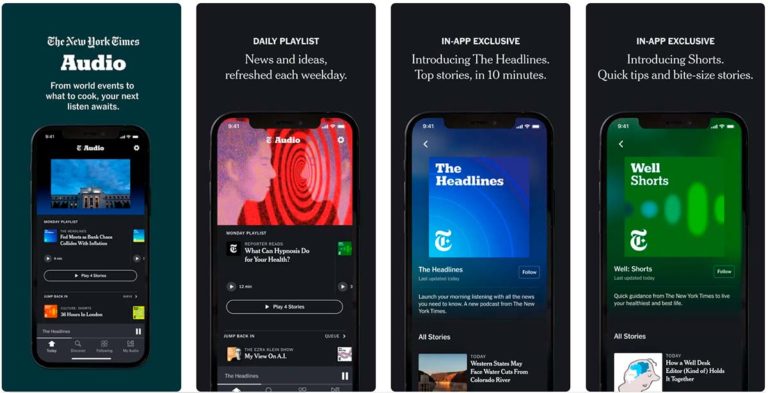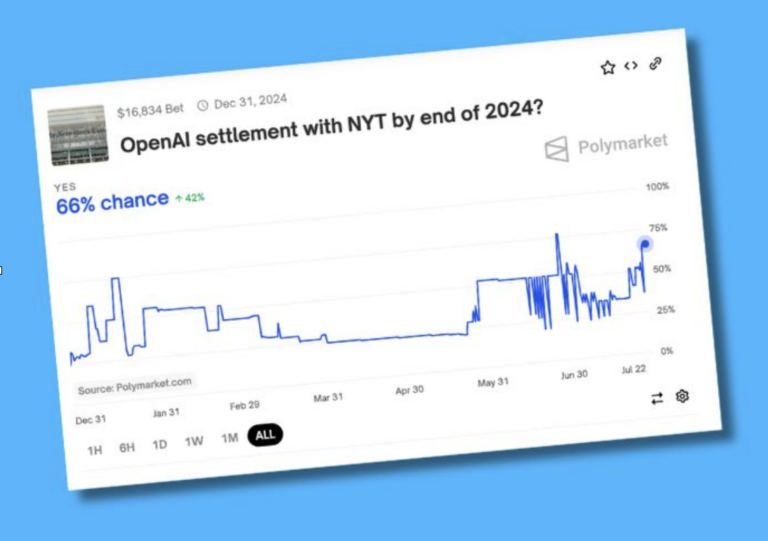Four smart uses of artificial intelligence in journalism
Traducción automatizada
Artificial Intelligence (AI) is also redefining the global media landscape through automated translation, allowing media outlets to reach new audiences and increase their reach and profits. Le Monde launched its English edition a month before Finnish broadcaster Yle published its first news in Ukrainian. Le Monde's project arose from a reporter's proposal to write a series of articles in English about the 2022 French elections. Faced with the efficiencies of machine translation, the newspaper decided not only to translate a selection of daily articles, but to launch a full English edition. Now, the first item on Le Monde's home page is a button to choose between French and English. This English edition offers 40 articles every day of the week and 30 every day at the weekend.
Tratamiento de textos
Otro de los campos en los que está avanzando a gran velocidad la IA dentro de las redacciones es en el del tratamiento de textos, desde la detección de errores gramaticales hasta el análisis de contenido y la segmentación de noticias para los lectores.El Atlanta Journal-Constitution ha estado utilizando IA para reestructurar su boletín de noticias por correo electrónico, proporcionando recomendaciones personalizadas para los lectores basadas en su historial de lectura. La firma belga Twipe proporciona esta tecnología de automatización, usando IA para asignar categorías al contenido del periódico y luego agrupar las historias en la newsletter basándose en los patrones de lectura del usuario y las tendencias en el sitio web del periódico.Actualmente, 50.000 suscriptores del Atlanta Journal-Constitution reciben un boletín de noticias diario generado completamente por IA. Según Zack McGhee, director sénior de experiencia de audiencia digital del periódico, el índice de apertura de estos correos es de un 6,5%, superior al 5% de los correos curados por humanos.Más allá de las categorizaciones de noticias, la IA también puede analizar las relaciones entre palabras y párrafos, e identificar cuánta opinión, reportaje original o agregación incluyen los artículos. La startup Overtone AI ha creado modelos que realizan precisamente esta labor, proporcionando una puntuación que predice el impacto de las historias.También el Institute for Nonprofit News (INN) está utilizando la IA para clasificar los cientos de historias que sus socios publican cada día, proporcionando una primera selección que ayuda a los editores humanos a compartir trabajos que se alinean con los intereses de sus audiencias.
Fighting misinformation
Artificial Intelligence (AI) is poised to play a crucial role in fighting fake news and detecting bias, according to engineers at Yle News Lab y tracking and analyzing demographic and political information from sources cited in the news, AI can help identify potential blind spots in diversity or signs of bias. This is achieved through a combination of source tracking and sentiment analysis, an application of Natural Language Processing (NLP) that allows AI to detect tone in text by examining the relationships between wordsAccording to Samuli Sillanpää, technical lead at Yle News Lab, this approach can help journalists gain a more detailed view of what they cover and how they cover it. But AI applications are not limited to news produced by newsrooms themselves. With AI increasingly being used to generate online content, tools such as GPTZero, developed by student Edward Tian can help detect AI-written text by assessing sentence complexity and word choice range In the fight against disinformation, it is hoped that AI can detect common language patterns in disinformation, such as "hyperpartisanship, lack of sources, vague claims, and toxicity." While pure fact-checking by AI still seems a long way off, these tools could make a significant difference in the fight against fake news and AI-generated content, Bullard argues. sostiene Bullard.
Content generation
The use of Artificial Intelligence (AI) in content generation is booming, but still remains within certain limits Narrative, a company that generates natural language, has created a tool used by the Wall Street Journal to write stories, However, there are precautions to be taken. The AI must be trained with the right information to be able to write a Wall Street Journal story, for example, and it must be able to adopt the writing style of the media outlet's journalists. David Llorente, CEO of Narrative, suggests that AI is best for helping with paragraphs, not full stories, and that language models are not knowledge models. Another potential use for AI is to summarize stories for distribution in newsletters, social networks, or other platforms. According to an Associated Press survey, summarizing text is one of the most requested AI tools in local newsrooms. Despite the benefits, fear of AI remains a major issue for journalists. At Yle, the initial adoption of AI was met with skepticism. However, the company has tried to frame AI as a colleague in focusing on market trends and financial data. This allows journalists to concentrate on analysis and interpretation. David Llorente, CEO de Narrativa, sugiere que la IA es mejor para ayudar con párrafos, no con historias completas, y que los modelos de lenguaje no son modelos de conocimiento. Otro uso potencial para la IA es resumir historias para su distribución en boletines informativos, redes sociales, u otras plataformas. Según una encuesta de la Associated Press, la de resumir textos es una de las herramientas de IA más solicitadas en las redacciones locales. A pesar de los beneficios, el temor a la IA sigue siendo un tema importante para los periodistas. En Yle, la adopción inicial de la IA fue recibida con escepticismo. Sin embargo, la empresa ha intentado enmarcar la IA como una colega en lugar de una sustituta, incluso asignándole un nombre y un dibujo de un robot amigable. La idea es ayudar a los periodistas a sentirse más cómodos trabajando con la IA como una nueva herramienta y no como una amenaza.
Fuente de la información: https://laboratoriodeperiodismo.org






